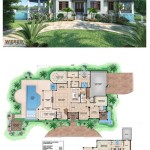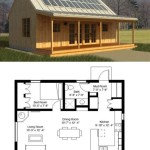Essential Aspects of 1970s Split Level Floor Plans
Split-level homes gained popularity in the 1970s as they offered a unique combination of space, functionality, and style. These homes featured a unique layout that allowed for separate living areas on different levels, providing both privacy and a sense of openness.
1. Multi-Level Design: The defining characteristic of 1970s split-level homes is their multi-level design. Typically, these homes featured three levels: a main level, an upper level, and a lower level. The main level usually included the living room, dining room, and kitchen, while the upper level housed the bedrooms and bathrooms. The lower level often served as a family room or recreation area.
2. Open Floor Plan: The main level of 1970s split-level homes often featured an open floor plan, with minimal walls separating the living, dining, and kitchen areas. This layout created a sense of spaciousness and allowed for easy flow between different rooms.
3. Vaulted Ceilings: Many 1970s split-level homes incorporated vaulted ceilings in the living room or other main areas. These ceilings added a sense of height and drama to the space, making it feel more grand and inviting.
4. Large Windows: Large windows were a common feature in 1970s split-level homes, allowing for ample natural light to flood the interior spaces. These windows often extended to the floor, providing scenic views and a connection to the outdoors.
5. Indoor-Outdoor Connection: Many 1970s split-level homes featured sliding glass doors or patios that connected indoor and outdoor living spaces. This design element allowed residents to seamlessly transition between their home and backyard, creating a sense of expansiveness.
6. Privacy and Separation: Despite their open floor plans, 1970s split-level homes also emphasized privacy and separation. The different levels of the house provided distinct spaces for various activities, allowing family members to retreat to quieter areas when desired.
7. Storage and Functionality: 1970s split-level homes typically offered ample storage space, with built-in closets and cabinets throughout the house. The lower level often included a laundry room, storage room, or workshop, providing additional functional areas.
In conclusion, 1970s split-level floor plans offered a unique combination of features that made them popular and enduring choices. Their multi-level design, open floor plans, vaulted ceilings, large windows, indoor-outdoor connection, privacy, and functionality continue to appeal to homeowners who value space, style, and versatility.

Hugedomains Com

1970

Vintage House Plans Multi Level Homes Part 17

Pin Page

The Unique Shapes Of Minto S Back Split Designs In 60s And 70s
Architecture Split Level Houses Why Cyburbia Urban Planning Placemaking And More
Architecture Split Level Houses Why Cyburbia Urban Planning Placemaking And More

10 Awesome Raised Ranch House Ideas

The Unique Shapes Of Minto S Back Split Designs In 60s And 70s

Building Systems That Delivers Better Outcomes For All








